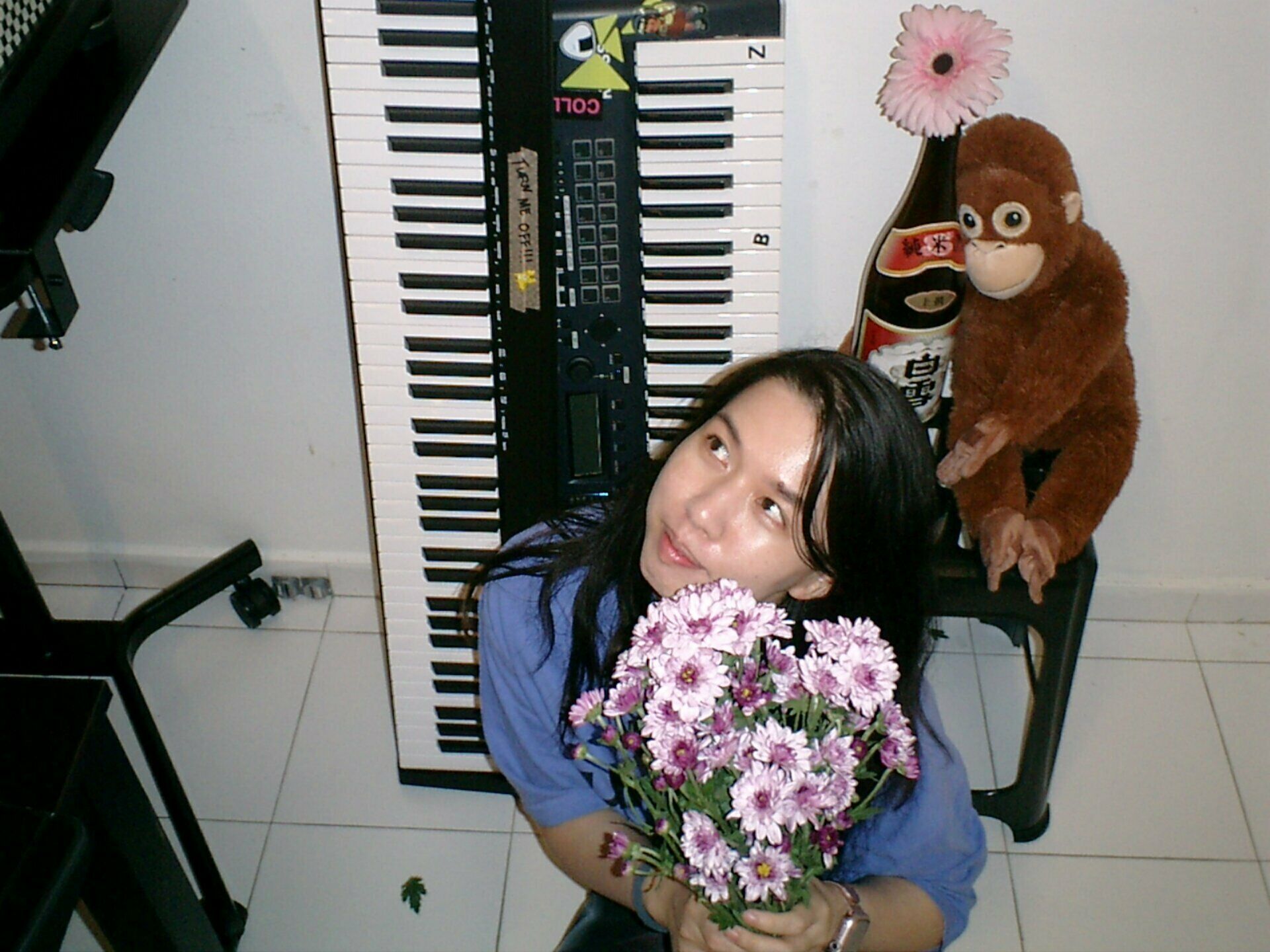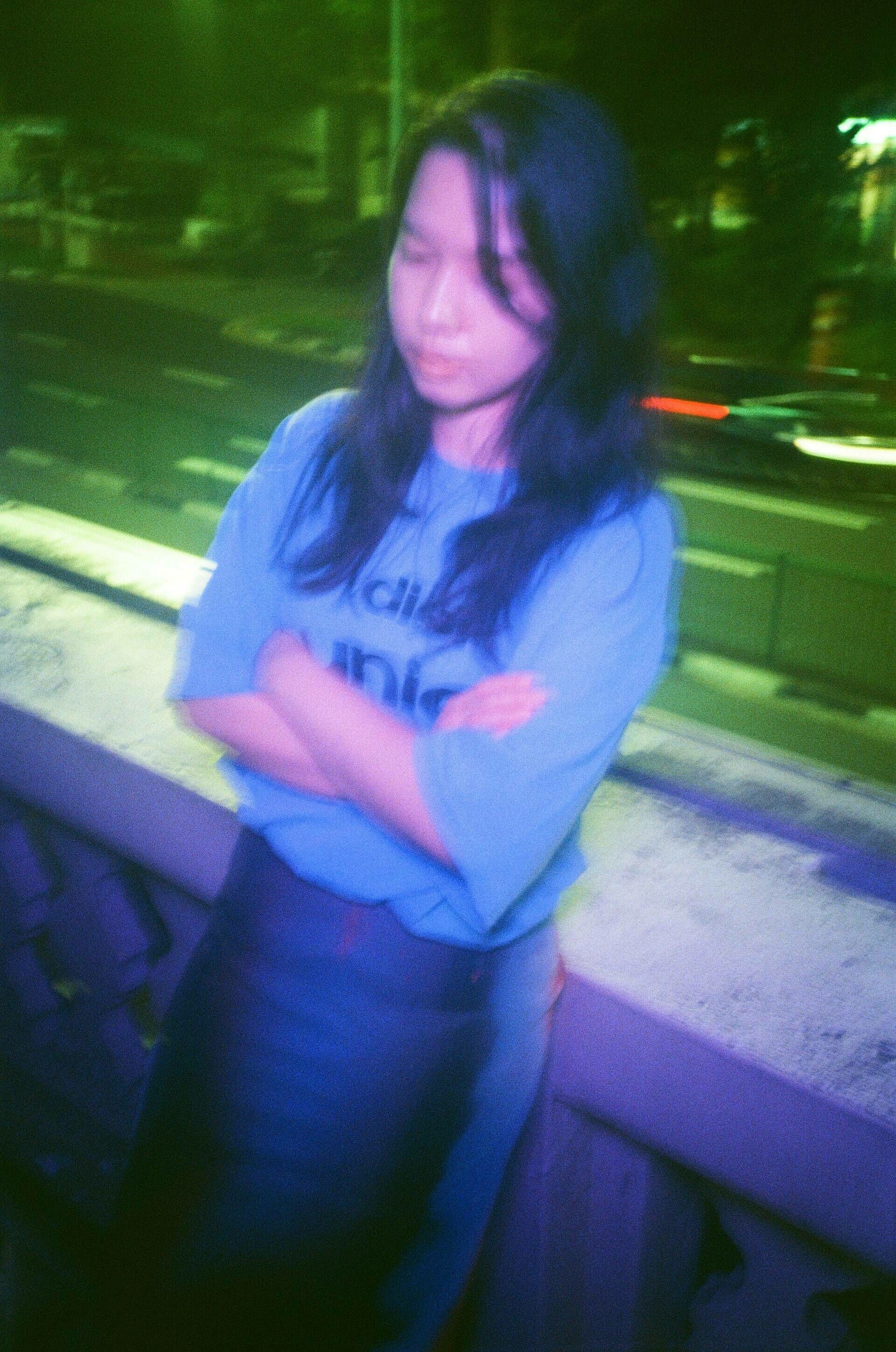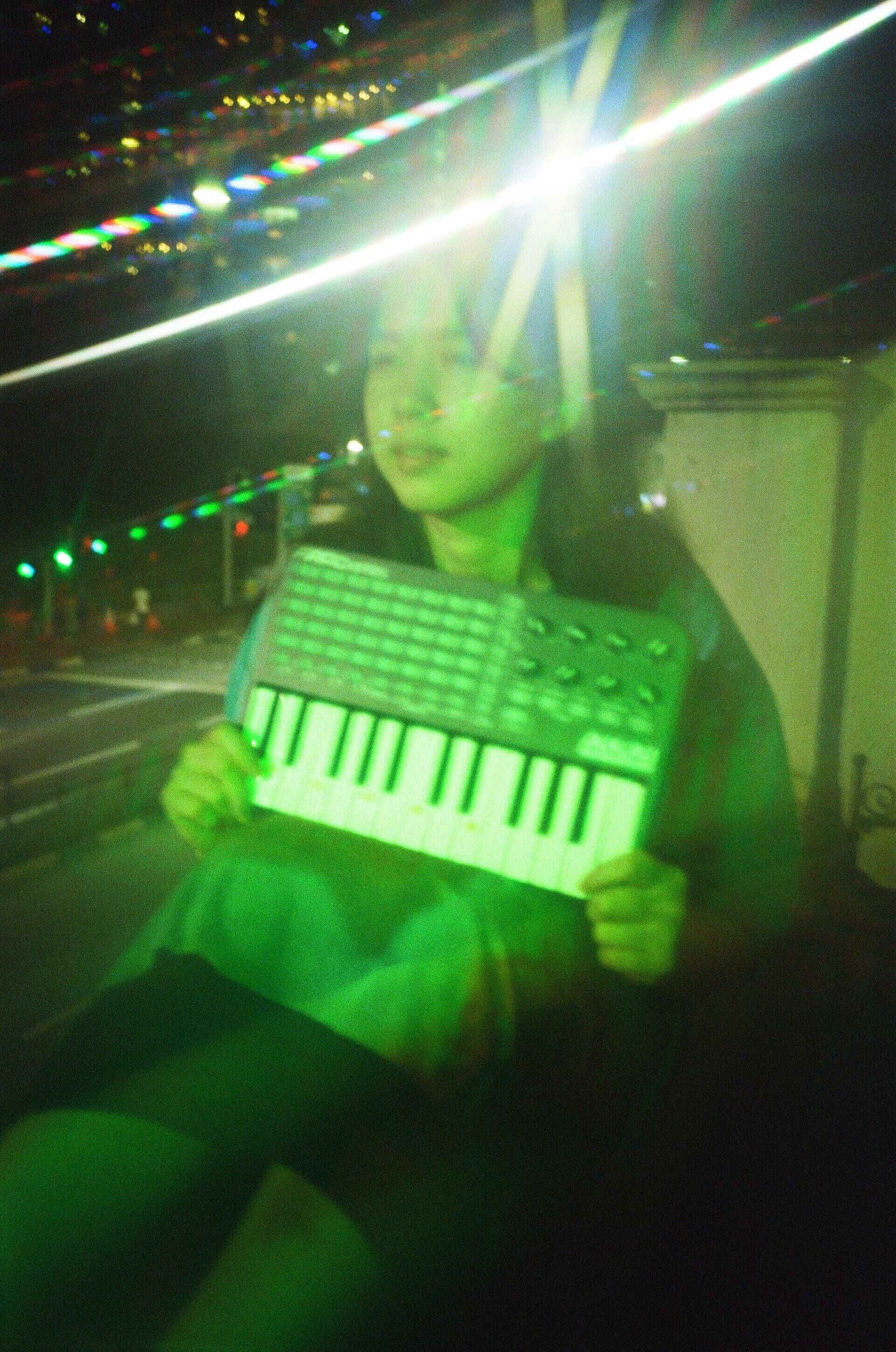By her own admission, Emanon “sort of stumbled into music production”. Although she grew up playing the double bass and is a proficient saxophonist, the life-long music fanatic instead chose to pursue a successful career in the corporate world. But ironically, it was her “stressful day job” that led her back to music as a personal outlet. “Think Aggretsuko,” she quips.
Over the last 5 to 6 years, Emanon has used whatever spare time she has to dive deep into the intricacies of production - going from exploring the infinite possibilities of Ableton to crafting her own experimental compositions. Although much of what she made was initially designed as a creative egress for professional pressures, some of her work surreptitiously made it into the discerning ears of Singaporean independent label Super Enjoy.
The result was the birth of her incognito alter ego (an alias inspired by the gorgeous Kenji Tsuruta manga of the same name), and release of her wonderful debut EP entitled Surface of Sound. This sublime 6-track effort features 4 original tracks (including standout single ‘Origami Jazz’) and 2 remixes from Super Enjoy stalwarts Bongomann and Dexter Colt. We caught up with the burgeoning producer to find out more.

What prompted you to make the jump into making and releasing music?
Music has always been a part of my life since I was young. I still have all the CDs I ever owned and Limewire discographies from back in the day which I collected, on a hard drive, and I’ve always been listening to everything and anything - ambient, K-pop, jazz, hip hop, psych, shoegaze, etc. Unfortunately, I didn’t have the opportunity to pursue making and playing music more till I was older and more financially independent.
I’ve always had a soft spot for jazz, and when I was younger I dabbled in playing the double bass but I was kind of made to give it up because of life circumstances, and then later on in life, I picked up the saxophone. I then went on to learn music production from some friends in the music scene I was hanging out with when I was more actively jamming and playing saxophone. It was really inspiring to meet musicians who had no formal training in music and had just learnt the ropes from trying or emulating songs they liked. I thought if they could do it, I should at least try to!
At that point, I was also getting frustrated with the technical limitations of my playing and the sort of usual things that come with playing an instrument - meaning you have to memorise certain songs that people want to hear and play what people want you to play in a certain manner. I’d also been experimenting with DJing, making little mixes and edits of things using DJ software; but I felt I didn’t really fit in with what party DJs normally played, and everything I liked was a bit more weird and not necessarily something you could dance to. Production was like a whole new universe where I could find ways to express things which I couldn’t really explain to people, like what I liked or what I envisaged. That and I guess it was perfect for an introvert like me because being a bedroom producer let me to quietly work on my own ideas in a more private space, versus performing where it's all about the show, or as a DJ at a party. There are a lot of loud personalities in those spaces, not to mention it is heavily male dominated.
So I just kept on making stuff in my free time, and I tried to show people when I could and then it started to take a life of its own organically. I’m not sure where the creative drive comes from, I just like making things even if it doesn’t really go anywhere (Laughs). I started making little videos as well to accompany some of the tracks and I thought that was fun too. But nonetheless, I feel production also helped me progress musically, helped me listen “deeper” and more “critically”.
In terms of releasing, I have my anxieties and fears about it to be honest, but now I try to frame it as a natural step in trying to get feedback in the creative process… that and the Super Enjoy team have been incredibly helpful and encouraging.

What inspired Surface of Sound in particular?
It is called Surface of Sound because there’s a lot of play and experimentation with texture.
I like it when songs or audio have a textural dimension which aren’t a traditional musical feature like melody or bass, etc. It makes for a more subtle and evocative way of expressing a feeling or vibe without literally saying so. Like, a song could make you feel like you’re swimming through water or falling through space; I think it's important especially when tracks don’t have lyrics. ‘Warm Sake’ for example was meant to just kind of sound like that woozy feeling after you had a few sakes.
The “textures” were made whilst just experimenting and messing around with Ableton - layering samples, filtering, side-chaining, tape plugins, abusing reverb and pads etc. to create new patterns. I like creating weird new sounds which aren’t immediately recognisable but have some kind of pattern to them so your ear can still latch on; or even better if they have a weird groove embedded. But that style of music making also made the tracks hard to mix and balance because the tracks had a lot of weird artefacts.
In terms of musical references, I really like this album by Jan Jelinek called Loop Finding Jazz Records where he manipulated samples from jazz records to create all kinds of weird textures, which sound totally different from jazz. That was a huge influence conceptually.
We've heard that you're a multi-instrumentalist. Did you play any instruments on the album?
(Laughs) I wouldn’t really call myself a multi-instrumentalist… I can play saxophone and some basic keys and bass but there are lots of other musicians out there who are far more proficient. I think I just try to create a sound from whatever equipment I have available and then try to make things work out on a track. When I started producing, I was forced to learn more about the technicalities of other instruments - like at this one point, I went down this rabbit hole of learning all kinds of different drum patterns.
The tracks were just made with my laptop and a MIDI keyboard, using Ableton. The saxophone and trumpet on ‘Origami Jazz’ are actually a lot of origami-ed samples. I tend to just jam little sounds and snippets out, which I like when I have spare time and save them for later use. I later then manipulate them until there is a groove or melody that kind of works with whatever drums I have in mind.
Is Ableton considered an instrument now too? To be honest, it has so many possibilities it's crazy and when I first picked it up, I thought it was harder than a traditional instrument. I learn new things about it every time I open it till this day…
Guide us through the compositional or creative process underneath Surface Of Sound…
'Rabbit On The Moon' - Riffing off digital arpeggios for a bouncy fun bright track … like how i think the rabbit on the moon would sound like bouncing about there out in space by himself.
'Origami Jazz' - It started as a sort of a joke initially, because i was having trouble mixing my live saxophone with electronic sounds, and also I wanted to make jazz more “accessible”; not something you had to slave at for an eternity and then feel forever inferior about; kinda like Whiplash. The sax has a lot of weird overtones and frequencies so it is hard to compress and EQ without losing a lot of its fullness, and I prefer playing tenor sax, which doesn’t sound as nice as something more brassy like trumpet on dance tracks because the low end takes up so much space. So I was hunting for samples on Splice to learn how to record and mix saxophone better, and I suddenly thought it’d be fun to try to make jazz solos from all the samples.
So the brass sections in this track are basically a tonne of different samples origami-ed together. I guess some purists would disagree with the sample use but I don't think I could have put it together without having gone through the pain of trying to learn to solo on the saxophone. (Laughs) I spent a lot of painful hours in the shed trying to memorise certain jazz solos and trying to learn how to play them - sometimes I was successful, sometimes I was’t, but one of the biggest music lessons I learnt from that was that phrasing is really important. Hopefully some of that has translated.
'Raindrops Carve Canyons' - The track title was an inspirational quote I heard somewhere and stuck on a post-it on my speakers. I was trying to comfort myself that the small steps I was taking would have an impact one day - the percussion being the driving groove are kind of like raindrops and the stop-start unpredictability was an experiment with using silence or a slowdown to develop rhythm and tension.
'Warm Sake' - My head after a bottle of sake bleep bleep bloop bloop.
View this post on Instagram
Why did you pick 'Origami Jazz' as your first single?
It’s the most “locked” track in terms of the arrangement and song-writing, meaning everything kind of has its appropriate place in the frequency spectrum, so it's one of the stronger tracks. I think also it has a lot of the favourite things I love about music - sampling, jazz elements, groove, call and response, sine arps, wavy pads.
What are your thoughts on Bongomann's remix of 'Origami Jazz' and Dexter Colt's remix of 'Warm Sake'?
I was too nervous to listen to the remixes when I first received them! It was such an honour because I have been following their DJ and production progress over their years and have mad respect for what they do. I also geeked out that they got Ben Hixon to do the mastering.
I love the DJ lens they put on the tracks. I don’t always make music from a DJ’s perspective and my tracks also aren’t easy to DJ with but it's definitely something I will think about more after listening to their remixes, especially in terms of structure and low end. I really love how they did the low end so cleanly and in such a balanced manner. I tend to overdo my tracks sometimes and then have a headache editing things out later, so that clean balance is something I am definitely going to try for moving forward.

Why did you choose to release your debut on Super Enjoy?
I love their quirky sense of humour and how non-pretentious they are as a collective; it translates at their events, their graphics and sound selection. I’ve known Jenn Chunes and El Professional for a while, and I’d also always looked up to what Bongomann and Dexter Colt were doing as DJs and producers, so naturally I kind of trusted them.
The release couldn’t have happened without them. The tracks were sort of languishing on my hard drive until one day I just sent a bunch of zip files to Jenn and told her to feel free to use any of the tracks while she was DJing. Somehow she sent it to the rest of the team, and then the EP kind of naturally happened. They also have been incredibly supportive, patient, encouraging, and also respectful of the artistic process.
Outside of making music, no one really talks about the harder parts of music, which are the music business and administrative parts which I feel like they really also have gotten a handle on.
View this post on Instagram
Do you have any plans to perform live?
On 25 October with Super Enjoy at Wild Pearl, I’ll probably either DJ or do a live Ableton set.
I do want to start an ambient jazz band at some point in the future, so hit me up if anyone is interested! In the meantime, I also want to make more thematic types of DJ mixes for casual listening, kind of like what I did for an NTS Supporter radio submission last year, which was just an audio mix of songs and sounds I found whilst I was travelling in Kyoto.



